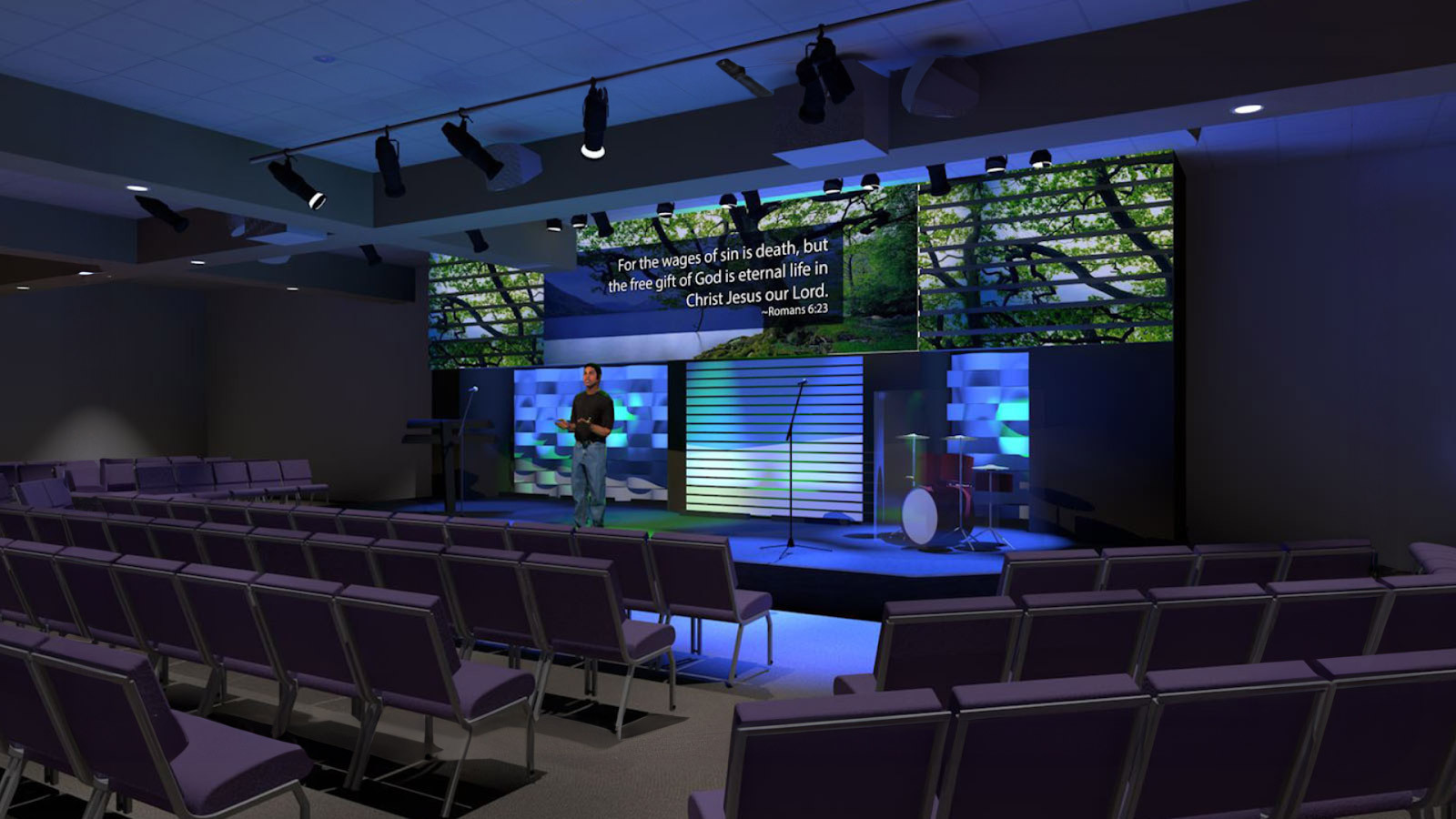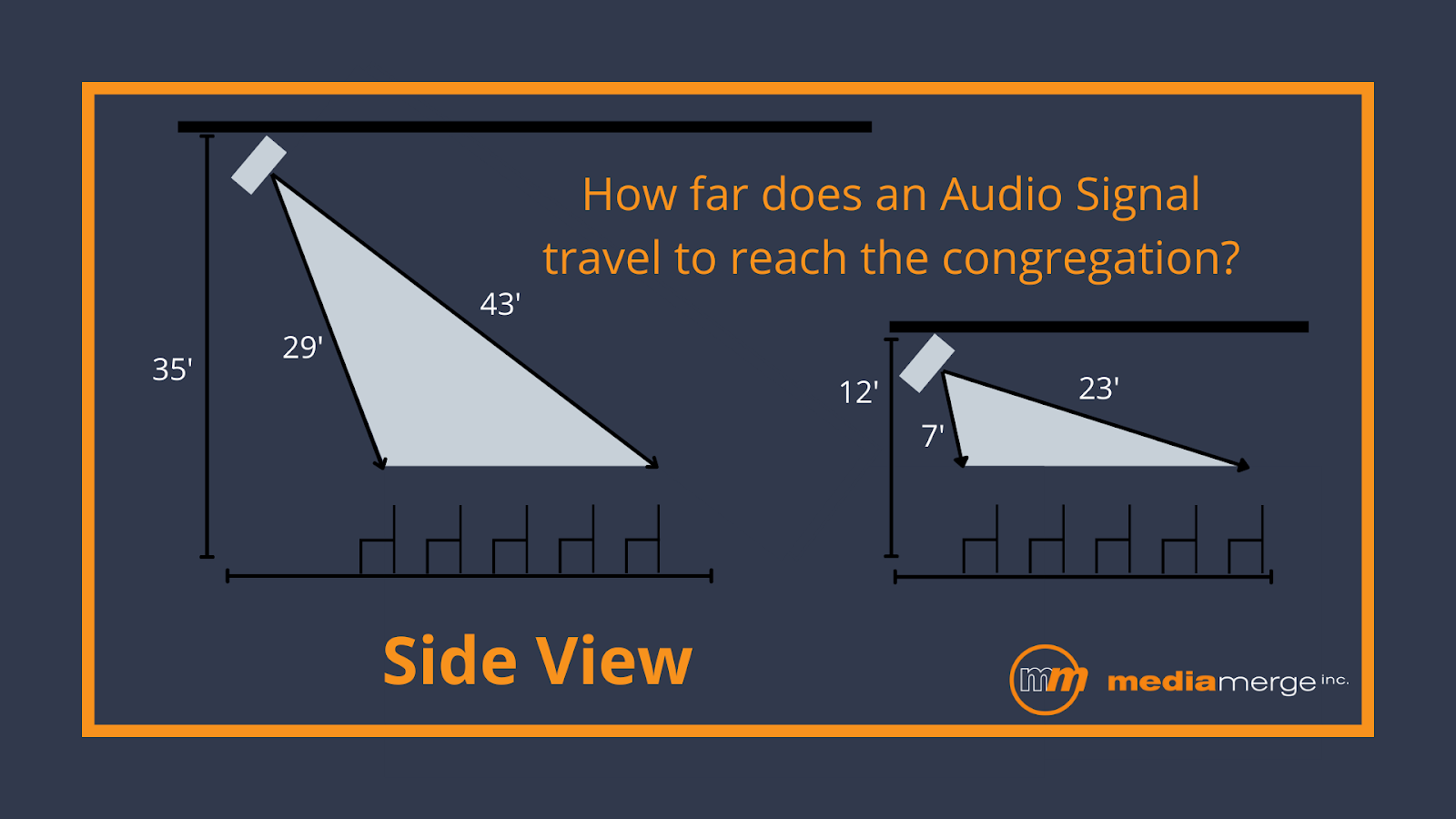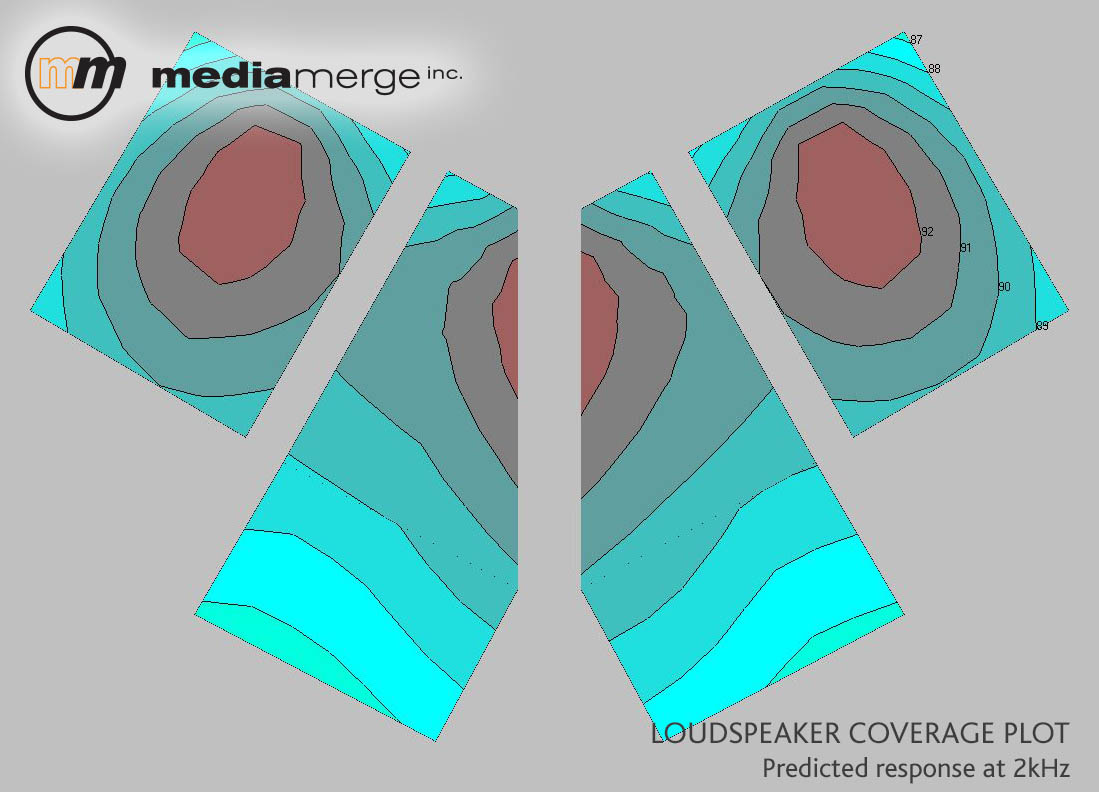Is your Church considering purchasing or renovating a space with low ceilings to use as a primary Worship Space? Here are some of the most common challenges we run into when designing Audio Systems with low ceilings. We hope this provides resources that you and your team need to be informed of during future conversations.

Goal #1: Ideal Loudspeaker Coverage
A primary goal when designing an Audio System for any space is to disperse the sound at equal levels throughout the audience area. The generally accepted standard for even coverage is +/-3dB, which means that there is only a 6dB difference from the loudest seat to the quietest seat in the room.
Fortunately, you don’t have to know exactly what that measurement means other than the fact that it is a measurable, provable result. If your system is within +/-3dB, you should be good to go without complaints that it’s too loud in one seat while another complains it’s not loud enough.
Speaker Placement
One of the most basic design considerations is where to place a speaker in order to minimize extreme differences in distance to the various seats in the audience area it’s intended to cover. This placement helps to address the natural drop-off in volume and differences in sound arrival time across the audience. In most cases, the speakers are hung close to the stage front, so they will naturally be closer to the front rows of the audience.
Generally speaking, offsetting this volume drop-off is most easily accomplished with conventional speakers (we’ll talk about line arrays later) by locating them as high as possible while still achieving the goals for performance. As an example:
As illustrated in the diagram below, if a speaker is hung at 35’ above the floor, then the audio travels approximately 29’ to reach someone on the front row. To get to the fifth row, the audio might travel 43’, a difference in distance of about 50%. The farther you go back into the audience area the greater the difference in travel distance becomes.
However, in a room with the same audience area where the ceilings are only 14’ tall, we may only be able to get the speakers 12’ off the floor which means the audio would travel 7’ before reaching someone standing in the front row. The fifth row would then be roughly 23’ away from the speaker, which is a difference in distance of about 150% or 3 times as much as the previous example. Since sound naturally decreases 6dB every time you double the distance, you can easily see how this presents a challenge for even coverage.

High-quality conventional speakers are designed to help even out the coverage naturally caused by the differences in distance. But in a low ceiling situation, the speakers are so close to the front row compared to that last row, that it almost always exceeds the +/-3dB target. So as a result if you adjust the volume to be at the desired level for the back rows then the front will complain about the level being too loud and vice-versa.
The Trouble with Low Ceilings
Generally, the solution to this particular challenge is to place additional speakers in the audience area to provide coverage where other speakers reach their limit. Since we can control the volume level and timing of each individual speaker separately, we can provide the desired coverage and maintain control by having multiple speakers act as a single system. This is typically referred to as a distributed system or sometimes a system with additional “delayed” speakers. Though “more speakers” doesn’t necessarily equate to superior sound where fewer speakers can be used, even audio coverage is far more important than the tradeoffs.
With an increased number of physical locations comes more conduit, more cabling, and of course more physical components. This increase of equipment generally makes the cost factor of a room with a low ceiling higher than normal. But often that’s the tradeoff and challenge when you have no choice but to work with a pre-existing structure.
At face value, this is the advantage of line-array-type speaker systems. These systems are designed inherently to provide even coverage over distance, but they still suffer from the same challenges in a low ceiling application because there’s not enough ceiling height to hang an array that is long enough to work properly. This can potentially result in a worse imbalance where the high and low-frequency parts of the sound have even more extreme coverage differences. Not to mention the additional vertical height will obstruct sightlines or likely be in the way of projectors or stage lighting.
There are some products available that fall between Conventional speakers and Line Arrays that blend characteristics of both to achieve optimal results when speaker height is limited. However, these product lines are generally the most expensive option available.
What Can You Do to Ensure Success?
Obviously, each room is unique. This is why it is absolutely critical that you review Loudspeaker Coverage Plots for any design you may consider. Coverage plots provide a graphical illustration of sound coverage across the entire room, so you can easily identify any areas that are compromised. These plots are the only way to distinguish Opinion from Fact when it comes to the predicted performance of your sound system.

They also allow you - the client - to make an informed decision. What’s the highest priority - uniformity, sightlines/aesthetics, budget, etc? These factors may not be mutually exclusive, but if an individual aspect of a design comes down to a decision, it’s crucial to have the most accurate information available.
The Goal
Sometimes, dealing with the challenges of a low ceiling is simply unavoidable. However, that doesn’t mean that you should settle for an inferior product or feel overwhelmed by the barrage of options. Our goal is simple - to come alongside you as a trusted partner to provide the solutions, education, and expertise that you deserve.
And to start the conversation on your upcoming project, Contact Us today!